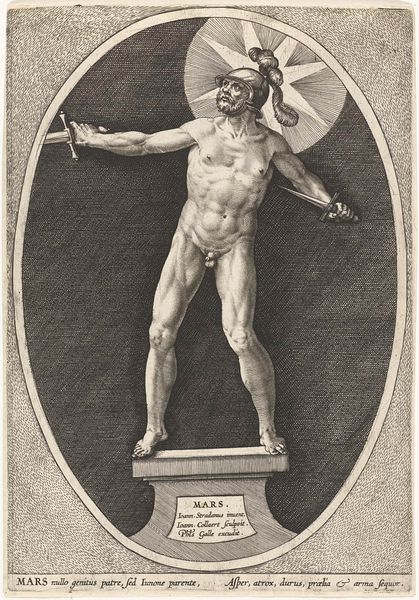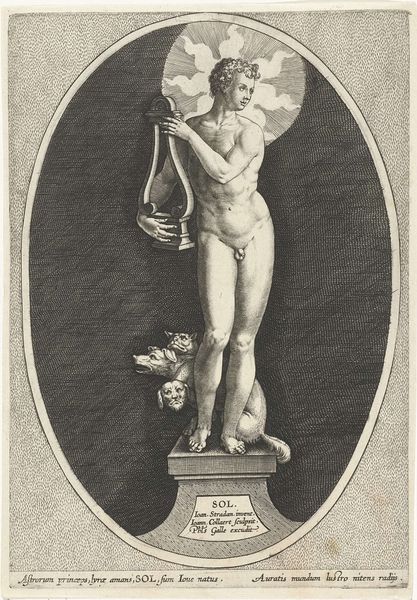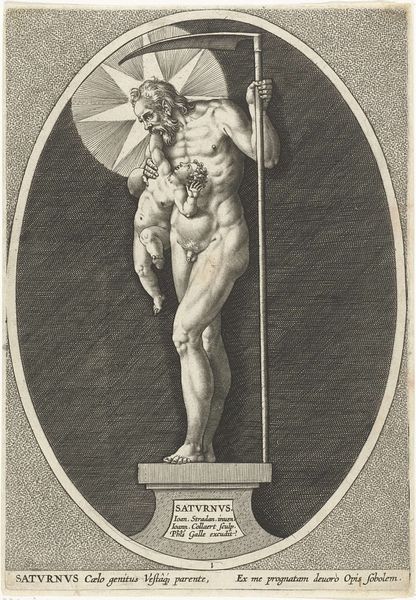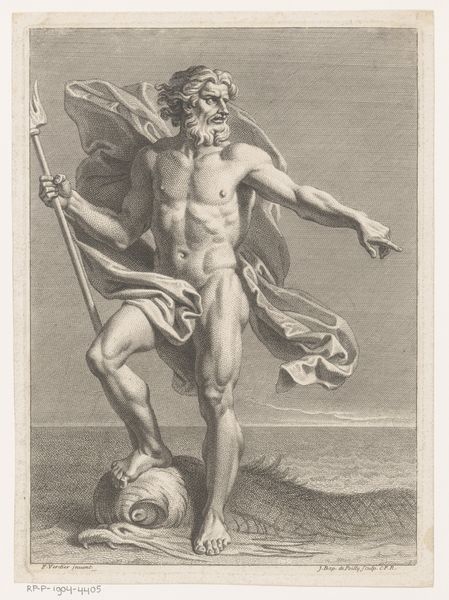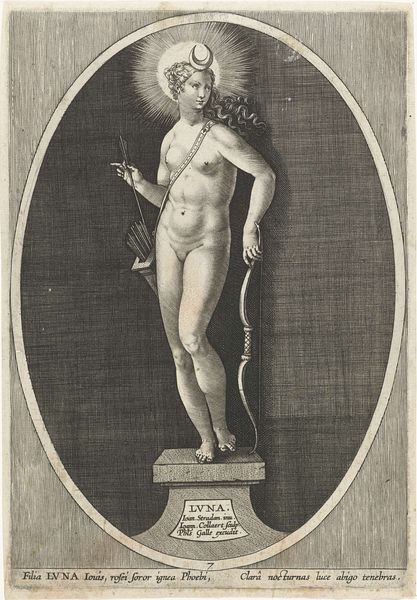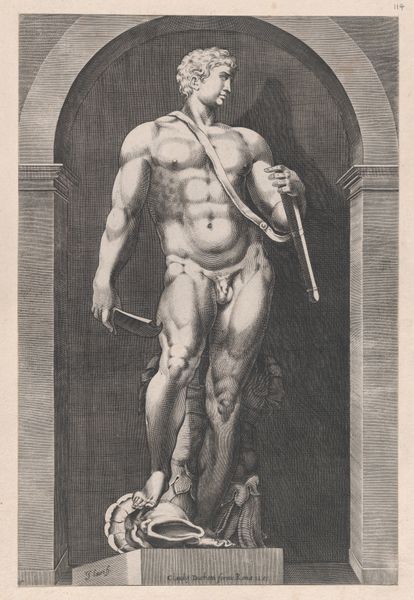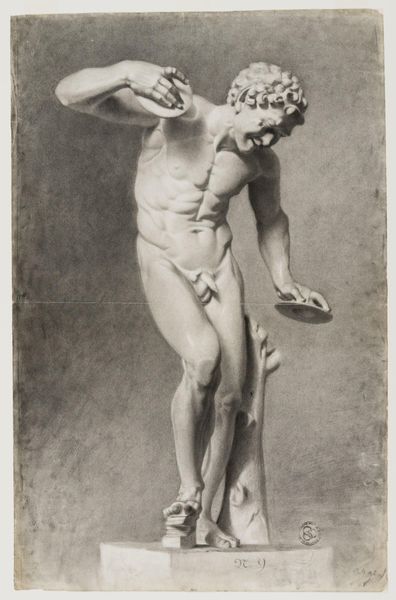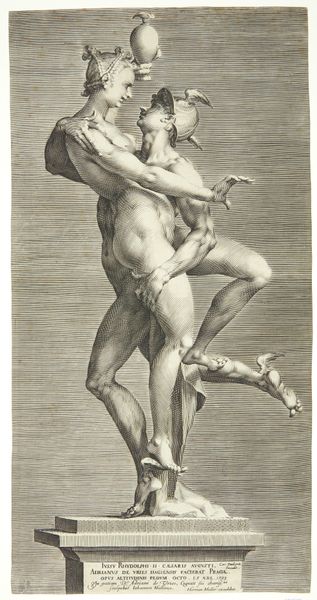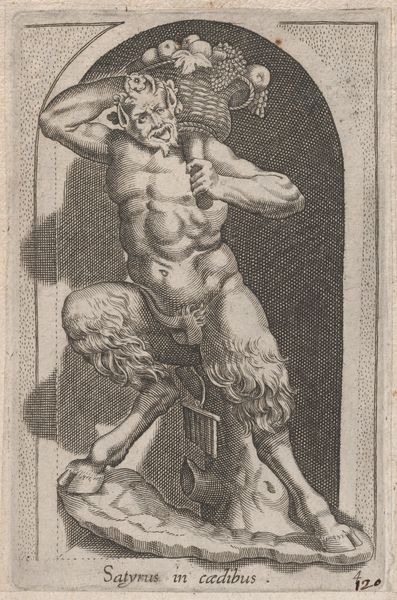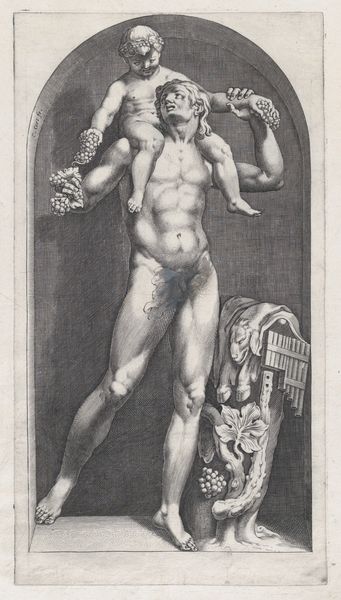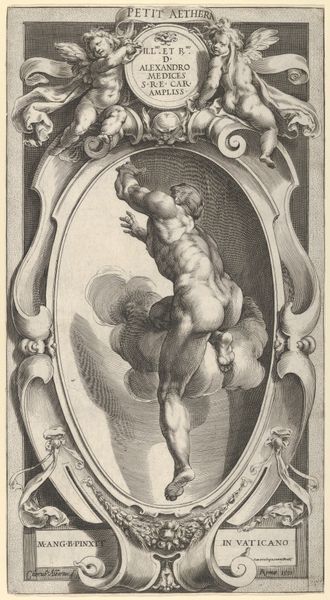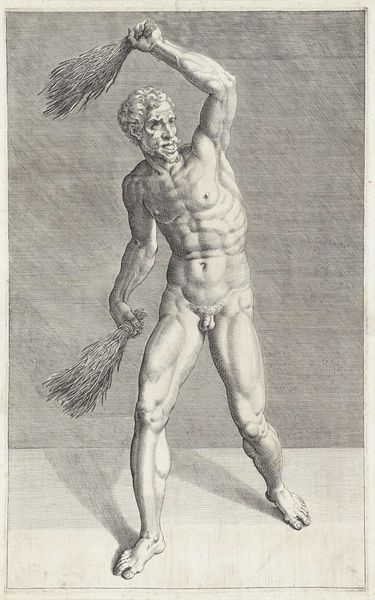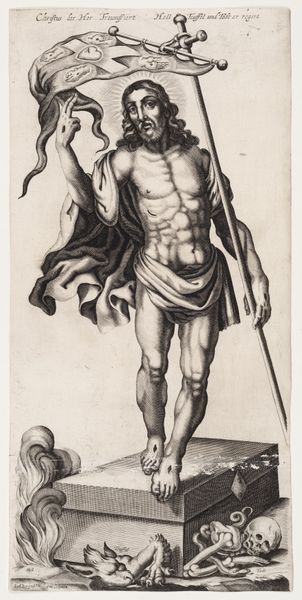
Dimensions: height 198 mm, width 136 mm
Copyright: Rijks Museum: Open Domain
Jan Collaert II's engraving presents us with Mercurius, messenger of the gods. His winged sandals and helmet mark him as a figure of swift passage between realms, holding the caduceus, a symbol of commerce and negotiation. The image of Hermes, or Mercury as the Romans knew him, extends back to ancient Greece, yet resurfaces here, revitalized in early modern Europe. The caduceus, entwined with serpents, has roots in ancient healing traditions. We see a similar motif in the Rod of Asclepius, symbolizing medicine. Consider how these symbols migrate, adapting across cultures and epochs. Hermes, associated with trade and communication, perhaps mirrors our own need to mediate and navigate a complex, ever-changing world. The rapid and subtle transfer of information across time and space, both conscious and unconscious, evokes a powerful emotional response, connecting viewers to a long and complex history. These symbols—wings, serpents, staffs—reappear throughout history, each time imbued with new meaning. They represent an unending cycle, forever shaping the narrative of human culture.
Comments
No comments
Be the first to comment and join the conversation on the ultimate creative platform.
